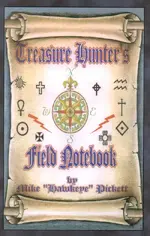Dear group;
I do not wish to be a naysayer, however SWR is correct in his assumption that the *Spaniard* in the above photo is in fact a modern rendition of an American cowboy. My lines of reasoning are thus shown in the photo itself, starting from top to bottom;
1) The saddle horn. This is a very new development in saddlery and it first appeared on saddles in the American West in the late 1860s due to a need for cowboys to utilize the horn as a anchor point whilst roping cattle.
2) Chaps. These outer garments also made their first appearance in the late 1860s, due to a need for cowboys to have a tough outer garment to protect the legs and thighs from stickers and brush, while remaining flexible enough to ride and work in.
3) The undercut heel. The undercut heel first started appearing on boots in the very late 1880s or early 1890s time frame. Before this time all boots had squared off heels, which are today known as *walking heels* as opposed to the undercut or *riding heels*. Prior to the development of the riding heel, many cowboys were injured or killed when their foot accidentally slipped through the stirrip and not being able to extract it, they were dragged by their heel from the stirrup. The undercut riding heel allowed the cowboy to pull his foot back through the stirrup, thus greatly lessening of danger of being dragged across Kingdom come.
There exists many more lines of evidence, however I astutely refrained from including them, lest I start sounding pompous and overbearing. We may now conclude that the painting is modern in nature and it could not have possibly been rendered before the 1890s. We may use the photo as depicted by Rangler as a prime example of why a thorough knowledge of history becomes so very important, lest one proceeds from false assumptions.
Your friend;
LAMAR
I do not wish to be a naysayer, however SWR is correct in his assumption that the *Spaniard* in the above photo is in fact a modern rendition of an American cowboy. My lines of reasoning are thus shown in the photo itself, starting from top to bottom;
1) The saddle horn. This is a very new development in saddlery and it first appeared on saddles in the American West in the late 1860s due to a need for cowboys to utilize the horn as a anchor point whilst roping cattle.
2) Chaps. These outer garments also made their first appearance in the late 1860s, due to a need for cowboys to have a tough outer garment to protect the legs and thighs from stickers and brush, while remaining flexible enough to ride and work in.
3) The undercut heel. The undercut heel first started appearing on boots in the very late 1880s or early 1890s time frame. Before this time all boots had squared off heels, which are today known as *walking heels* as opposed to the undercut or *riding heels*. Prior to the development of the riding heel, many cowboys were injured or killed when their foot accidentally slipped through the stirrip and not being able to extract it, they were dragged by their heel from the stirrup. The undercut riding heel allowed the cowboy to pull his foot back through the stirrup, thus greatly lessening of danger of being dragged across Kingdom come.
There exists many more lines of evidence, however I astutely refrained from including them, lest I start sounding pompous and overbearing. We may now conclude that the painting is modern in nature and it could not have possibly been rendered before the 1890s. We may use the photo as depicted by Rangler as a prime example of why a thorough knowledge of history becomes so very important, lest one proceeds from false assumptions.
Your friend;
LAMAR






 )
)







 I'm enjoying the reading. Everyday I check in to see if Stilldign comes Home.
I'm enjoying the reading. Everyday I check in to see if Stilldign comes Home. 
